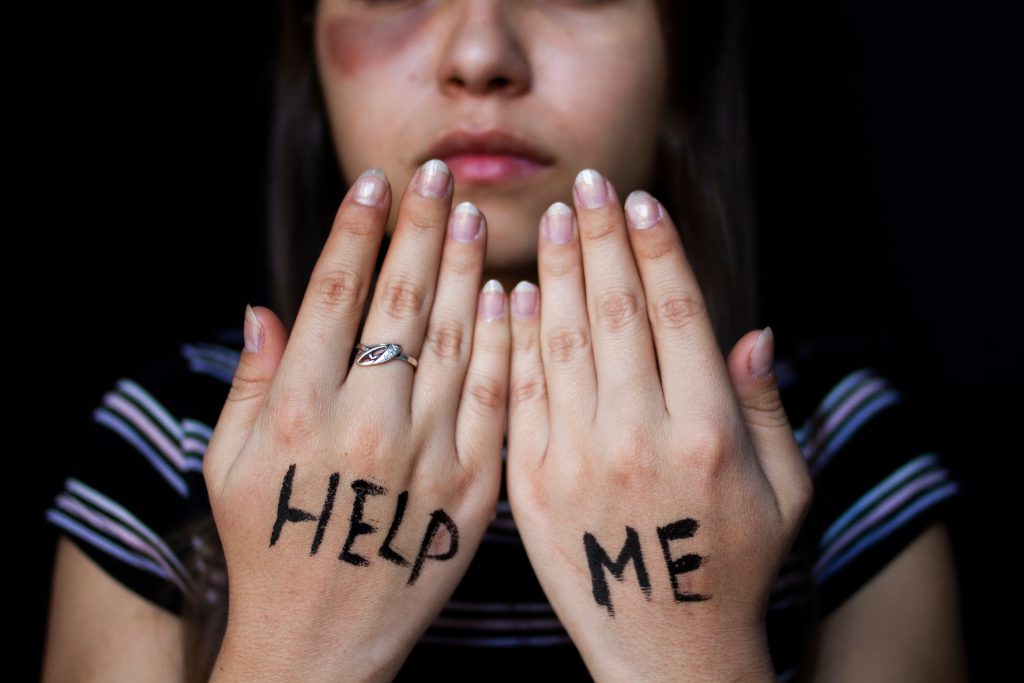What is femicide and how does it impact girls?
Femicide is a pervasive violation against the human rights of women and girls (Cullen et al, 2019). Femicide, a form of gender violence, can be broadly defined as any act of murder carried out against women and girls, whether it is intentional or not, that is committed both inside and outside the confines of the home (WHO, 2012; Godoy-Paiz, 2012; Shalhboub-Kervorkian & Daher-Nasif, 2013).
Although acts of femidical violence do not always result in cases of murder, these acts can increase the likelihood of murder (Oliveria & Furio, 2006). The World Health Organization (2012) highlights four types of femicide: dowry-related femicide, honour killings, non-intimate femicide and intimate femicide.

Femicide as a form of Gender Violence
In any situation, violence is gendered because it is directed against a woman or girl because of their gender (Bunch, 1990; Shalhboub-Kervorkian & Daher-Nasif, 2013). Gender violence is perpetrated against female in various ways, affecting females of all ages, and encompasses but is not limited to emotional abuse, spiritual abuse and acts of sexual, domestic, political violence, (Roure, 2011; Bunch, 1990). On a global scale, women and girls are systematically targeted through such violence and their human rights are routinely violated because of a pronounced lack of legal protections in state legal systems (Jefferson, 2004).
How Femicide is Carried Out in Different Regions
Regardless of regional trends, it is widely recognized that femicide violence constitutes a global public health crisis that requires a preventative response (WHO, 2013; Toprak & Ersoy, 2017). Femicide against girls is evidenced in cases of female infanticide, which is the killing of female babies in India and China, and in cases of sexual abuse of girl children in the armed conflict situations of Rwanda, Kosovo, Sierra Leone and Guatemala, where rape was used as a war tactic by both combatants and government agents (Henry, 2014; Godoy-Paiz, 2012).
Cases of forced pregnancy and marriage used by armed groups as military strategies in the Rwanda and Darfur conflicts are further examples, where such crimes were committed to alter the ethnic makeup of the population (Henry, 2014). Femicide also takes on the gender-based acts of forced abduction and forced disappearances, mutilation and the beating, burning and poisoning of women and girls (Oliveria and Furio, 2006; Livingston, 2004; Schmidt, 2005).

The rates of femicidal acts carried out against women and girls is not well-documented. It is challenging to pinpoint exact figures because of data collection issues and the underreporting of female homicidal deaths to police authorities and emergency services (WHO, 2012). Existing research has primarily focused on non-fatal violence between intimate partners (Toprak & Ersoy, 2017). In cases where there is data collection on homicidal deaths, for example in Turkey, informational sources are limited (Toprak & Ersoy, 2017).
Globally, patterns of femicidal acts vary significantly, depending on the specific region, country, relevant cultural factors and social groups (i.e. women with children living in armed conflict, migrant women and young women) (Shalhboub-Kervorkian & Daher-Nasif, 2013). For example, in specific Indian regions, arguments between family members in the home and dowries are the main contributing factors in the planned murders of young brides when dowry demands are unmet (Toprak & Ersoy, 2017).
Central America
In her work on femicidal violence in Guatemala, Godoy-Paiz (2012) highlights that violent, gender-based crimes against women are at an all-time high in the Central American region. Numerous reasons can be linked to current rates of increasing violence against women and girls, but must notably among these reasons is the wave of widespread democratic and judicial reform in Latin America in recent decades, which has resulted in increasing levels of political violence, paralleled by high homicide rates, violent gang activity, organized crime and murders carried out directly against women and children (Godoy-Paiz, 2012; Otero, 2008).

Within the Central American region, research has shown that Peru, along with Mexico and Guatemala are countries with the highest levels of the most severe types of female violence (Hernandez, 2018; Godoy-Paiz, 2012). Within the context of Mexico, researchers and activists have found that acts of femicide are unique to Ciudad Juarez, a city in Mexico which has experienced a wave of socio-economic and cultural changes as a result of the North American Trade Agreement passed in 1994 (Weissman, 2005). Combined with economic changes during this time, unequal socio-cultural relations led to conditions that give rise to violence against women (Pantaleo, 2010).
In comparison, high rates of targeted and systemic violence against women and girls in Guatemala has tripled over the past ten years, in a post-war society where internal armed conflict lasted for 36 years (Godoy-Paiz, 2012). As a country with one of the highest per capita murder rates in the world, acts of female violence against women in Guatemala has been internationally recognized as a human rights crisis requiring legal intervention (Godoy-Paiz, 2012). However due to a lack of judicial reform on the issue of gender violence, academic researchers such Godoy-Paiz (2012) stress the importance of creating policy responses to eliminate gender-based violence in Guatemala.
Femicide in the form of Honour Killings in Palestine
Femicide, a fundamental violation of one’s right to life, security and safety is also a human rights issue that affects the lives of girls and women in Palestine. Shalhboub-Kervorkian & Daher-Nasif (2013) recognize the term femicide to denote all violent acts carried out in the name of ‘honor’ against women and girls.

Honor-based violence is a practice where immediate or extended family members deliberately plan a violent response when there is a “[mere] perception that a woman, as wife or daughter, has violated the honour of her family by crossing a boundary of sexual appropriateness” (Korteweg, 2012, p. 136). Although these acts of violence have been traced throughout regions in North Africa, South Asia, Latin American and the Middle East, they tend to differ in the manner in which they are carried out (Korteweg, 2012).
Honour-based systems are rooted in power relations whereby the male creates established rules in the social order of patriarchy, and patriarchal values are meant to maintain the reputation and status of his family in their community (Aujla & Gill, 2014). In this way, honor crimes are a complex form of femicidal violence because they are carried out in specific contexts where behavioural norms are challenged. Such crimes are carried out to serve as a forewarning to girls and women that they will be punished if they do not adhere to socially acceptable rules of behaviour.
The Path to Ending Gender Violence
In taking into account the need to put an end to acts of femicidal violence, several approaches and recommendations have been put forth by the World Health Organization (2012), such as reduced gun ownership, prevention measures and police and medical personnel training. In carrying out its mission, Humanium advocates for a global approach, one that responds directly to the needs of different populations and addresses the origins of human rights violations.
Our approach is also participatory in that we promote self-help and self-sufficiency by having the project beneficiaries take part in all stages of the project, helping them recognize their own priorities and needs. By way of example, Humanium is active in 5 out of the 20 regions in Rwanda through its “Improving Children’s Rights in Rwanda” project, which mobilizes the community to create a positive and healthy environment for children.
This project set out to build and sustain community resilience and put an end to the cycle of violence that children were exposed to. This project was created with the understanding and historical context of the severe degree of violence children witnessed and were exposed to during the 1994 genocide, including acts of femicide. It is also recognized that the parents who lived through the genocide, have unexpressed traumas which persist on a daily basis in the home, and gives rise to domestic violence, where children are the first victims.

The project was designed with the goal of deeply acknowledging the need to create child protection reflexes in adults and reducing acts of domestic violence carried out in the home, all of which are preventative measures as advocated for by the World Health Organization (2012). This project also aims to improve the mental health outcomes of children and the overall situation of children in local Rwandan communities. By focusing on localized challenges and issues, and integrating techniques such as trauma healing workshops and leadership skill exercises, it is with great hope that such projects can improve the outcomes for these children of the future.
Written by Jennifer Prashad
References
Aujla, W. & Gill, A. K. (2014). Conceptualizing ‘Honour’ Killings in Canada: An Extreme Form of Domestic Violence?”, International Journal of Criminal Justice Sciences, 9(1).
Bunch, Charlotte. (1990). “Women’s Rights as Human Rights: Toward a Revision of Human Rights” Human Rights Quarterly 12(4).
Cullen et al. (2019) “Counting Dead Women in Australia: An In-Depth Case Review of Femicide” Journal of Family Violence 34(1).
Godoy-Paiz, P. (2012). “’Not Just ‘Another Woman:’ Femicide and Representation in Guatemala” Journal of Latin American and Caribbean Anthropology 17(1).
Henry, Nicola. (2016) “Theorizing Wartime Rape: Deconstructing Gender, Sexuality and Violence” Gender & Society 30(1).
Hernandez, Wilson. (2018) “Violence with Femicide Risk: Its Effects on Women and Their Children” Journal of Interpersonal Violence 00(0).
Korteweg, A. (2012). Understanding Honour Killing And Honour-Related Violence in the Immigration Context: Implications for the Legal Profession And Beyond, Canadian Criminal Law Review, 16(2).
Livingston, J (2004). “Murder in Juarez: Gender, Sexual Violence and the Global Assembly Line” Frontiers: A Journal of Women Studies 25(1).
Olivera, M. & Furio, V. (2006). “Violencia Femicida: Violence against Women and Mexico’s Structural Crisis” Latin American Perspectives 33(2).
Otero, M. (2008). “Violence Against the Women of Juarez” Canadian Women Studies 27(1).
Pantaleo, K. “Gendered Violence: An Analysis of the Maquiladora Murders” International Criminal Justice Review 20(4).
Roure, J. G. (2011) “Gender Justice in Puerto Rico: Domestic Violence, Legal Reform, and the Use of International Human Rights Principles” Human Rights Quarterly 33(3).
Schmidt, A. (2005). “Ciudadana X: Gender Violence and the Denationalization of Women’s Rights in Ciudad, Mexico’ The New Centennial Review 5(1).
Toprak, Sadik & Ersoy, Gokhan (2017). “Femicide in Turkey between 2000 and 2010” PLOS ONE 12(8).
Weissman, D. (2005). “The Political Economy of Violence: Toward an Understanding of the Gender-Based Murders of Ciudad Jarez” North Carolina Journal of International Law and Commercial Regulation 30(795).


